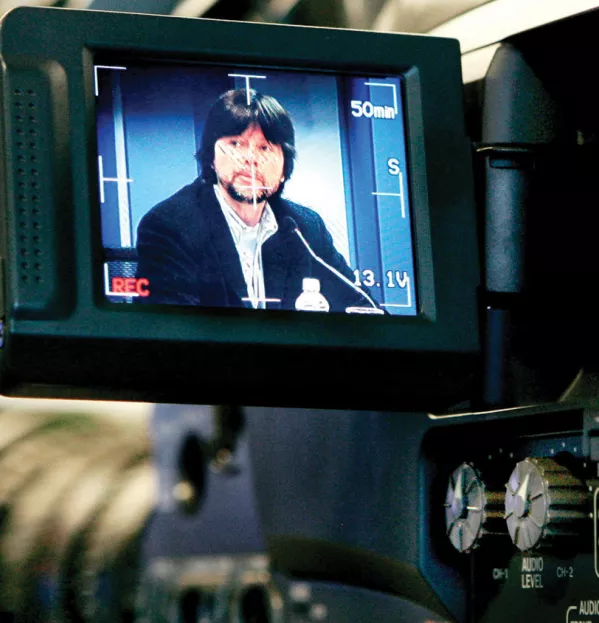Ditch essays for documentaries

Giving students an essay to write as the regular and main outcome of a unit of study is academically rigorous and worthy. But it can also be repetitive and disengaging. To avoid sluggish, procedural work, you need to think of how you can refresh the format.
Fortunately, you can easily refresh it using the fine art form of documentary making.
Not only does making a documentary get students to think differently about the formation of an argument and how to support it - which will boost their essay writing skills next time - it also has numerous benefits in its own right.
It develops media literacy, and gets students to reflect carefully on how their own voices come across and the importance of speaking clearly, steadily and lucidly when presenting to an audience.
Here’s how best to make it work using an example from my history classes.
Method
One topic that I have delivered through the documentary-making approach is the causes of the American Civil War, which I study with my Year 9 historians. From the outset, students are provided with a mark scheme that makes it clear that, although the documentary script (the essay) is the main thing to focus on, credit is also to be earned for such things as diction, selection of primary source images and carefully selected background music.
Phase 1
The first phase involves getting students to gather the essential information about the topic in the most efficient way, which is through a teacher-led lecture. This is supported by a student handout consisting of a detailed timeline of events, which is broken down into key “chapters”. At the end of each chapter, the lecture is paused and students are given 10 minutes to locate one or more high-resolution pictures using Google Images relating to some of the events and personalities described. Each of these images is then saved into a folder ready to serve as raw material for the video project.
Phase 2
The next step involves watching the noted documentary-maker Ken Burns being interviewed on the art of story, which is a brilliant six-minute synopsis of how the historical writing process is a balance of science (empiricism, research) and art (imagination, emotion).
We then watch the opening minute of some documentaries to see the techniques they use to engage the viewer from the outset (I use the opening segment of the The World at War, although any BBC documentary is likely to illustrate similar techniques).
The methods we consider include the use of silence, subtle music and carefully chosen images; however, I also stress the importance of a narrative “hook” - often a dramatic moment or personal account - which handily equates to the opening topic sentence of an introduction to an essay.
Phase 3
Next, students focus on selecting the main factors in the American Civil War, connecting them together in an analytical way through topic sentences, and “top and tailing” this with a brief introduction and conclusion.
They are effectively writing their essay, but they are seeing this merely as one part of a creative process. They start by choosing the five most interesting events in their timeline and explain how each one increased the tensions that erupted into war.
The next challenge is to connect these factors in five key topic sentences using connective words and phrases (“As a result…Nevertheless…This meant that…This highlighted…This accelerated…This was the result of…Because of this…” and so on).
Following this, they have to develop each of their sentences into a full paragraph with substantiating explanation and detail. Finally, they have to design their own narrative “hook” to serve as an introduction, and decide how to round the story off with a conclusion. By the end of this process, they have produced a sophisticated essay.
Phase 4
In this final stage, we start with a lively and humorous discussion about what usually marks out school film projects as being amateurish. Students tend to identify issues such as a monotonous, rushed or mumbling narration, irrelevant and low-resolution images and intrusive background music. Students record their narratives into a sound-recording programme, import this into a movie-editing package, and then overlay the images that they gathered in phase 1 to produce their final movie.
Challenges
One of the most obvious challenges with this approach to essay-writing is that your students may not have the necessary software, and may not have the necessary skills to use it even if they do. With regard to the lack of software, it is worth pointing out to students - and ICT departments - that Windows Movie Maker is part of the standard Microsoft package, with iMovie the equivalent for Mac users. Similarly, Audacity (for sound recording) is freeware. If students are not familiar with such software, they can produce a storyboard consisting of images and each accompanying script section in PowerPoint, or even on paper.
Impact
The immediate impact of this approach to essay-writing is that it provides a fresh, rigorous and stimulating way of developing skills of research and written expression. Beyond this, it helps students to understand how historians construct a historical narrative through a process of editing and selection, and, more generally, how easily the media can therefore influence and even distort our view of historical and contemporary events.
Russel Tarr is a teacher of history at the International School of Toulouse. He tweets @russeltarr
You need a Tes subscription to read this article
Subscribe now to read this article and get other subscriber-only content:
- Unlimited access to all Tes magazine content
- Exclusive subscriber-only stories
- Award-winning email newsletters
Already a subscriber? Log in
You need a subscription to read this article
Subscribe now to read this article and get other subscriber-only content, including:
- Unlimited access to all Tes magazine content
- Exclusive subscriber-only stories
- Award-winning email newsletters